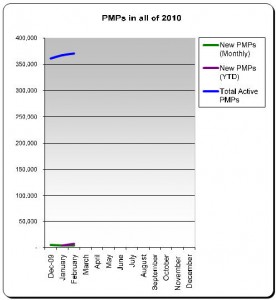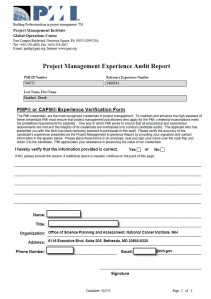Do you have that one stakeholder who comes to your meeting and finds a way to talk about something completely unrelated? You tell them you need to take the conversation offline but it's still really annoying. Bla bla bla! It's important when you schedule a meeting to have an agenda. It's also really important to stick to it. When in doubt, don't have the meeting.
Creating Unnecessary Bureaucracy
 I've rewritten this post several times now. The catalyst for this toned-down rant was the company-wide distribution of a new dress code policy. As background to this story, I was hired by a small business to support a Federal Government contract. If you want bureaucracy, the Federal Government is certainly where you'll find it. Where I don't expect to find it is with a small business. I've worked for both large and small businesses. The bigger they get, the more layers of bureaucracy there is. It doesn't have to be that way. I think some small businesses think you have to add a lot of crap to processes, in the hope someone will think there is value. Draconian policies do not translate to value! As I read the new policy, I became more and more incensed. I come from a military background, so if someone has anything to say about my appearance, they should say it to my face.
This dress code policy was not necessarily directed to me. That is where the problem rests. When you feel the need to communicate TO and not communicate WITH your people, you have a problem. This situation could have been easily avoided by a superior and a subordinate having a conversation. Instead, we get a vague policy that runs the gambit of "no shaggy hair" to "hair color should be kept within the family of traditional hair colors".
I've rewritten this post several times now. The catalyst for this toned-down rant was the company-wide distribution of a new dress code policy. As background to this story, I was hired by a small business to support a Federal Government contract. If you want bureaucracy, the Federal Government is certainly where you'll find it. Where I don't expect to find it is with a small business. I've worked for both large and small businesses. The bigger they get, the more layers of bureaucracy there is. It doesn't have to be that way. I think some small businesses think you have to add a lot of crap to processes, in the hope someone will think there is value. Draconian policies do not translate to value! As I read the new policy, I became more and more incensed. I come from a military background, so if someone has anything to say about my appearance, they should say it to my face.
This dress code policy was not necessarily directed to me. That is where the problem rests. When you feel the need to communicate TO and not communicate WITH your people, you have a problem. This situation could have been easily avoided by a superior and a subordinate having a conversation. Instead, we get a vague policy that runs the gambit of "no shaggy hair" to "hair color should be kept within the family of traditional hair colors".
Give me a break. This is a failure of both communication and of leadership. It doesn't matter if we're talking corporate, project management, or communication processes. Take a big step back and ask yourself if writing that process makes sense. Action and communication is what will become culture. Processes just become a pain in the ass that slow things down.
Image from kailash.balnac.com
Free Process Group and Knowledge Area Study Material
page43
5-9-42
This is the number combination I want you to remember.
5 Process Groups
9 Knowledge Areas
42 Processes
A colleague of mine just passed his PMP® exam. What was one of his regrets? He should have memorized page 43 of the PMBoK. Why? Page 43 is an excellent road-map. Go to any process on page 43 and you'll have a corresponding process group and knowledge area.
Want to Report Performance? You'll find it atthe crossroad of Communications Management and Monitoring & Controlling. By memorizing the items on this page, you will be able visualize where you are within a project lifecycle and answer a bunch of questions on the exam.
To make it easy on you, I created a simple piece of study material, based on page 43 of the PMBOK
Page 1 has all of the process groups, knowledge areas, and processes
Page 2 is missing Initiating processes
Page 3 is missing Planning processes
Page 4 is missing Executing processes
Page 5 is missing Monitoring & Controlling processes
Page 6 is missing Closing processes
Page 7 is missing ALL of the processes
With so many other things, memorizing isn't going to do you any good if you can't practically apply what you committed to memory. I can't say I have a use case from the real world, where memorizing page 43 would apply. But, if you want a leg up on passing the PMP® exam, I think it's a great start.
Be inspired to do great things
I just watched an awesome TEDx video. It suggests we teach our kids skills like
| problem solving | to ask questions | to be creative |
| to lead others | to learn from mistakes | how to save money |
| to want to make money | how to sell | to ask for help |
| public speaking | to never give up | to see solutions |
At the end of a TEDx video, there is a 2 minute video from Grasshopper.com. Want to feel inspired to do something great? Watch the video.
Great Video on a Secret of Passing the PMP Exam
If you're studying for your PMP®, I think you must watch this video. This guy, Jeff Minder (PMP) of Victory Vets, gets it. As a disclaimer, I am in no way profiting or promoting his service. I just think he did an awesome job with this video. While I've been working on HueCubed, I've realized the importance of memorizing page 43 of the PMBoK. I don't think you can memorize the entire PMBoK and expect to pass the PMP Exam. To be honest, I would hope you wouldn't. The exam is a series of scenario based questions. You are not going to be asked to define a project. Rather, a lengthy statement will be made and you'll probably be asked if it is a project, operations work, both, or neither. But back to the video and memorizing page 43.
My analogy of memorizing page 43 is like a child memorizing his or her ABCs. When they memorize their ABCs, they can then identify which letters are vowels and which are consonants. They can then build words to put into sentences. Sentences go into paragraphs...and so on and so on. Memorizing the ABCs will not make kids literary geniuses. Rather, they use the ABCs as building blocks for future learning.
When you're looking at page 43 of the PMBoK, you'll see Process Groups, Knowledge Areas, and processes. You need to memorize these core processes and understand where they fit into the big picture of a project. In this video, Jeff explains the proper way to read page 43. Yes, there is correct way to read that page.
From my perspective, the other note to make about this video happens at 6:17. The PMBoK and testing are written toward a projectized organizational perspective, in comparison to functional, matrixed, or composite. Remember that!
Passing the Test of All Tests (PMI Audit)
So, you just completed all of the paperwork, detailing all of your applicable education and work experience. PMI has given you the green light to schedule a date to take your PMP® exam. But what if you are audited? Wouldn't that just suck!?
Well, you met the requirements. PMI didn't say anything so you must be in the clear. Time to sign up to actually take the exam. Through a link on the PMI website, you pick a testing center in your area and find a time that will work. You enter your credit card number and click submit. Surprise! Instead of getting a confirmation page, saying thank you for paying for the exam, you get a "you've been audited" screen. What the hell!?
So, as soon as they have your money, you go into audit limbo. The audit process has started and there are only two ways out. [1] You withdrawal your application to take the exam. You will get "most" of your money back. [2] You complete your audit, submit your paperwork, and PMI allows you to take the exam.
With all of the figurative threats PMI publishes about not embellishing your experience, you better not have done it! I would compare this to going to a job interview. Your potential employer says they like what they see. You can continue on in the interview process, as long as you take your resume back to each of the employers you've listed and get them to sign a document agreeing you actually did the work.
What if your application is audited?
PMI answers a group of questions about this. First things first, stay calm. If you didn't lie on your application, you have little to worry about. You should have honestly detailed all of your work experience during the application process. For every project you submitted, you're going to be sent an audit report in PDF format. (see the 3 graphics to the left)
Page 1: What you entered during the application process.
Page 2: Stakeholder information and a line for them to sign, agreeing you did the work that you say you did.
Page 3: PMI Address information.
The pain of original signatures
For every one of these packets, you're going to need 2 original signatures. You can have a colleague, peer, client or sponsor who has intimate knowledge of the project sign the audit. You will then put the signed audit into an envelope (addressed to PMI), seal it, and have the same person sign the sealed envelope seam. Once you get all of your packets signed, sealed, and signed, you mail all of the envelopes to PMI.
The actual audit by PMI will only take about a week. You will receive an email notifying you if you pass or fail.
What is my advise?
Go into the application process with the expectation of being audited. Identify the people you want signatures from while doing your application. Identify a backup (signature) for each project. I spent more time tracking people down and getting signatures then I did completing the original application. I had 20 signatures I had to get. When budgeting the cost of the PMP exam, don't forget the cost of dinners and drinks for people who you need to track down to sign your audits. I had to manage my audit process like I would a mini-project.
Is it all worth it?
From my personal and professional experience? Yes. Though I do believe the ever-increasing number of PMPs in the market may commoditize the certification, it's still in high demand. Regardless if you're a good PM, if you have a PMP® or CAPM®, there is an assumption you're a good Project Manager. Because I was audited, I feel everyone should suffer the same scrutiny. Perhaps there will be fewer paper PMPs, if they knew up front they would be audited.
Thank you to Joseph Gruber for verifying the current audit process. He also suffered through a PMI audit. I remember the PMI audit process being a little different, when I went though it back in 2006. His personal experience was very helpful.
Did I miss anything specific you wanted to know? Just leave a comment.
(Yes, that's a picture of me pulling the sword from the stone)
February PMP Certification Numbers Are In
 Every month I get a copy of PMI Today and I annotate 3 data points: New PMP® for the month, new PMPs year-to-date (YTD), and total number of active PMPs. The trend continues, with the new number of PMPs down by just 1 to 3,713. Since we only have January to include, YTD total is 7,429. There are a total of 371,014 active PMPs.
I did a quick compare to Febrary of last year. The overall total of PMPs is up by 43,764 in 12 months. Average that out and you’re looking at 3,647 a month.
Every month I get a copy of PMI Today and I annotate 3 data points: New PMP® for the month, new PMPs year-to-date (YTD), and total number of active PMPs. The trend continues, with the new number of PMPs down by just 1 to 3,713. Since we only have January to include, YTD total is 7,429. There are a total of 371,014 active PMPs.
I did a quick compare to Febrary of last year. The overall total of PMPs is up by 43,764 in 12 months. Average that out and you’re looking at 3,647 a month.
I still predict PMI will hit 400,000 active PMP credential holders this year. But, I'm not as bullish on them reaching 450,000 by year end.
Any questions? Let me know.
| December (2009) | January | February | |
| New PMPs (Monthly) | 5,403 | 3,714 | 3,713 |
| New PMPs (YTD) | 3,714 | 7,429 | |
| Total Active PMPs | 361,238 | 367,619 | 371,014 |
Follow-up review of the iStudy v2.0 PMP application
 The iStudy PMP v2.0 is an iPhone and iPod Touch application specifically designed to help those aspiring to pass the PMP® Exam.
When I did my Original Review of the iStudy PMP® application, I was pretty happy with it. I said for $10, go for it. One feature I really liked was the questions were completely random. So, each test was unique.
The iStudy PMP v2.0 is an iPhone and iPod Touch application specifically designed to help those aspiring to pass the PMP® Exam.
When I did my Original Review of the iStudy PMP® application, I was pretty happy with it. I said for $10, go for it. One feature I really liked was the questions were completely random. So, each test was unique.
So, how does v2.0 compare to v1.0?
Here is what changed between the two versions:
Do I think you should get it? Again, I say go for it! It's only $2.99 for 550 questions and this version is even better than the last.





